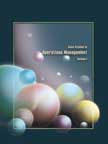Dyson Appliances Ltd. and its Approach to Innovation
|
|
ICMR HOME | Case Studies Collection
To download Dyson Appliances Ltd. and its Approach to Innovation case study
(Case Code: OPER087) click on the button below, and select the case from the list of available cases:


»
Operations Case Studies
» Operations Short Case Studies
» View Detailed Pricing Info
» How To Order This Case
» Business Case Studies
» Case Studies by Area
» Case Studies by Industry
» Case Studies by Company
Please note:
This case study was compiled from published sources, and is intended to be used as a basis for class discussion. It is not intended to illustrate either effective or ineffective handling of a management situation. Nor is it a primary information source.
Chat with us

Please leave your feedback

|




Abstract:
|
This case discusses the innovation principles and processes
adopted by Dyson Appliances Limited (DAL), a market leader in the vacuum cleaner
market. Experts felt that product design was a core competency at DAL and the
innovative designs of its product had enabled it to command a premium price in a
market that was previously known for price discounting.
According to analysts, DAL's constant focus on innovation had led to its
cornering a market share of 32 percent and 46 percent in the US and UK vacuum
cleaner markets in 2008. Analysts attributed the success of the company to the
innovation principles and processes institutionalized by DAL's founder James
Dyson (Dyson).
|

|
They felt that Dyson was the source of innovation at DAL. He
is himself widely known as the inventor of the first bag less vacuum cleaner
(DC01, DAL's first product) that took the vacuum cleaner market by storm in the
early 1990s. Since then, he and his team had churned out innovative models of
vacuum cleaners that had helped DAL gain a market leadership position. In
addition to vacuum cleaners, its other products such as The Contrarotator (a
washing machine) and Dyson Airblade (a hand dryer), were hailed by experts as
being equally innovative. Analysts felt that DAL's deep-set culture of
innovation gave it an edge over its competitors.
DAL approach to innovation drew inspiration from Thomas Alva Edison's (Edison)
step-by-step approach where he made a single change to the prototype at a time
in order to perfect his invention. Inspired by the thoughts of Edison, the
engineering and design staff at DAL made a single change to the prototype that
led to the launch of an innovative product. The case also discusses the
integrated approach to design and development of new products adopted by
engineers and design staff at the company, and how Dyson had fostered a culture
of innovation at DAL.
Issues:
» Study the innovation principles and processes followed by DAL.
» Study DAL's integrated approach to new product development and design.
» Understand how Dyson fostered innovation and creativity at DAL and
institutionalized a culture of innovation.
» Understand how innovation helped DAL emerge as the leader in the vacuum
cleaner industry.
» Understand how innovation can lead to a competitive advantage and how DAL had
developed a core competency in product design.
Contents:
Keywords:
Innovation, Design innovation, Product design, Disruptive innovation, Incremental innovation, Radical innovation, Creativity, Computer Aided Design, New product development, Integrated approach, Core competency, Culture, Teamwork, Market leader, Dyson
Yet Another Innovation at Dyson...
- Next Page>>

|
|










